Abstract
Background: The contact center industry is one of the world’s fastest expanding, and it has become a vital basis for businesses communicating with clients, whether through information sharing (inbound) or telesales (outbound). The goal of a contact center is to handle existing and future client queries, product support, and regular transactions.
Objectives: The purpose of the article was to examine the effectiveness of ICT in improving service delivery at the public sector contact centre and to determine the non-technical and technical factors that influence the effectiveness of the contact centre service delivery.
Methods: This article adopted a quantitative approach, using a survey questionnaire to solicit data from respondents. Convenience sampling method was deemed fit to sample contact centre agents and team leaders and managers in the contact centre of the Department of Home Affairs. Quantitative data were analysed using the Statistical Package for the Social Sciences (SPSS).
Results: Both the literature review and the empirical results revealed that the role of effective technology in service delivery has a significant influence on the quality-of-service results. The findings support the notion that many service failures are caused by a lack of technology training for employees.
Conclusion and contribution: It is concluded that the use of technology in the contact centre has significantly altered how employees perform their roles and responsibilities.
Contribution: The study found that training on new technological systems can help with service delivery.
Keywords: contact centre; service delivery; information and communication technology; people; processes.
Introduction
Contact centres are one of the fastest-growing industries in the services sector. The majority of contact centres provide the same type of services; however, the quality of service differs because of different technological channels that are available (Said, Ibrahim, Noh & Zaba’i 2022:8). The organisations increasingly offer services through customer contact centres using different technological channels of communication or platforms (Laleye 2015:42).
By nature, contact centres are operational environments that require wholehearted commitment from the employees within the organisation, so that they can successfully achieve defined objectives. Achieving business needs depends on how effective the utilisation of the technological tools is and how the management encourages their employees (Candeias, Chambel & Carvalho 2021:2). The efficient and effective management of services demands a distinct level of customer-perceived quality (Ghorbanzadeh & Beige 2016:53). Delivering quality services to customers depends on contact centres being equipped with all the necessary technological tools needed to send and receive large volumes of calls by telephone in the shortest period.
In this digital society, contact centre agents are expected to possess the technological know-how to carry out their roles and responsibilities efficiently. Therefore, it is critical for the organisation to invest in the technological know-how and development of agents in order to deliver quality services to their customers (Saberi, Hussain & Chang 2017:576). Agents perceive the usefulness of information and communication technology (ICT) as a potential corporate success factor that can be achieved through improved quality customer relationships and customer loyalty (Płaza, Pawlik & Deniziak 2021:110975). Saberi et al. (2017:575) stated that a challenge that many organisations continue to face is ensuring that contact centre agents are fully motivated and knowledgeable about the ICT tools they use to deliver quality service to their customers.
Following this introduction, this study will present a review of the literature, followed by the theoretical framework upon which the research question hinges. The research methods that were used to collect and analyse the data are presented next, followed by a presentation discussion, discussion of the results and how they link to the literature, contribution to literature, limitation, recommendation and future research and, finally, a conclusion drawn from the results and areas for further research.
Literature review and theoretical framework
The importance of the contact centre
The expansion of the contact centre industry has seen an increase in the demand for quality service provided by contact centre agents as there is currently a lack of skilled agents in the industry and there is a lack of communication between the contact centre agents (Mafini & Dlodlo 2014:66). Getting contact centre agents into the organisations is one thing, but effectively managing and motivating contact centre agents throughout to provide quality service is another (Mafini & Dlodlo 2014:77). The content employees are more likely to deliver excellent service and meet customers’ expectations.
Contact centres provide the same type of service, but they do not provide the same quality of service because of the different technological channels they are using. To achieve service excellence, contact centres must strive for zero defections and retain every customer that the organisation can profitably serve. Zero defection requires continuous effort to improve the quality of service delivery systems (Ahluwalia 2022:4479).
The contact centre environment
The contact centres channels provide and receive high volumes of information from the organisations’ existing and potential customer bases (Sawyerr, Srinivas & Wang 2009:305). These contact centres provide a competitive advantage for organisations and play a critical role to increase profitability and business growth. The modern contact centre handles phone calls, emails, instant messaging and online communication (Salojärvi et al. 2015:9). Each organisation has its unique way of doing things within the organisation, in terms of common beliefs, ethics and morals established by employers and how employees must behave among each other (Sawyerr et al. 2009:305). Contact centres are regarded globally as one type of service delivery channel that is more effective and efficient for organisations to achieve their strategic goals.
Contact centre activities are characterised two-fold, namely, inbound and outbound. This means that an agent can either respond to inbound calls or make telephone calls to customers, which are referred to as outbound calls. Inbound contact centres handle incoming calls from customers, and usually, these types of contact centres provide support for their customers. On the contrary, outbound contact centres handle outgoing calls that are placed by agents from within the organisation. These agents, for example, could be selling value-added products offered by their organisation (Płaza et al. 2022:2).
An organisation is a complex system that cannot function without people, processes and technology (Figure 1). These organisational resources are complementary and integrated with the organisation. The effectiveness of technology in improving service delivery in a contact centre environment encompasses the people, processes and technology at all levels of the organisation (Płaza & Pawlik 2021:44580). These components cannot be treated in isolation as they contribute to the success or failure of a contact centre environment.
 |
FIGURE 1: Resources of a contact centre environment. |
|
The role of people in a contact centre environment
A contact centre is where a group of people, from as little as five or more conduct business over the telephone. The group of people operates as a one-stop shop for customer service, sales, product information and services (Olukemi, Shanthi & Sijun 2009:317). The contact centre structure includes the roles of the managers, team leaders and agents. There are also other functions that play a vital role such as human relations (HR), training and operational management. The size of the contact centre determines the number of team leaders and additional support functions and agents that are required (Amos et al. 2013:148).
The key role of contact centre agents is to render services to customers. Their responsibility is to know and understand the products and services of the organisation, the processes that should be followed and the systems within the organisation. In order to satisfy customers’ needs, group efforts are required, and as many organised groups have increased, the tasks of managers have become more significant and more complex (Amos et al. 2013:8). Management is one of the most vital human resource activities within the department. From the time human beings started forming social organisations to achieve aims and objectives, they could not accomplish these as individuals. Management has been an important element to ensure the coordination of the individuals’ efforts (Warnich et al. 2015:89).
The service delivery by government departments’ contact centres is conducted through processes that are formulated by people. Therefore, people have an integral and essential role in a process. People and the roles they play are key to the success of innovation; innovation is a process, and it is dependent on people to drive it forward.
Processes within the contact centre environment
According to Matsoso (2010:18), in order for a contact centre to achieve exceptional service, certain procedures and processes should be followed. A process is defined as a structured group of related activities that are put together to produce a result that is of value to customers (Mickelsson 2013:541). The public sector needs effective processes to satisfy its customers and provide exceptional business results. All work is a process and is subject to constant improvement.
In today’s rapidly changing world, the nature of customers’ demands is also changing. It is only through endlessly improving processes that the public sector can put its customers first. Where processes are inappropriate in satisfying the needs of the customers, the service experience continuously degrades and costs rise. The failure of most organisations is because of the lack of well-defined processes (Chaudhary et al. 2023:163). Customers can sense that a contact centre agent is following an inapt process or script that does not resolve their problems and/or satisfy their needs (Laleye 2015:8). Contact centre agents should always follow the Department of Home Affairs (DHA) policies when logging onto their computers and signing on systems when talking to customers, because the performance of contact centre agents is often monitored through the use of electronic monitoring performance system (Kurniali & Titan 2015:299).
Contact centre technology
Information and communication technology is the association and arrangement of networks, hardware and software that support the processing, management and exchange of data, information and knowledge (Otumile 2010:10). Technology refers to a broad range of technological tools and resources used to create, disseminate, store and manage data. According to Selloe (2015:72), technology is an umbrella term for any communication device or application, including handheld computers such as digital cameras, personal computers, laptops, tablets, network technologies, local area networking and software, used to create, design, store, transmit, interpret and manipulate data in its various formats. In today’s business environment and for business strategy, ICT has emerged as a critical factor (Abdulkareem et al. 2020:66). Technologies not only help businesses achieve operational goals but also provide a competitive advantage. Information and communication technology has the potential to significantly improve the effectiveness of production and services, as well as their applications. In a contact centre environment, various telecommunication technologies are utilised as presented in Figure 2.
 |
FIGURE 2: A contact centre telecommunication technologies. |
|
Interactive voice response
Matsoso (2010:29) defined interactive voice response (IVR) as a recorded message that gives the customer a menu with options. It is used by a contact centre and call centre as an additional technology that places customers in a queue when there is no agent to take the call and then transfers the call when an agent becomes available to take the call (Jacobs & Roodt 2011:10). The system enables the management to access call statistics and to monitor agents’ performance (Pawlik et al. 2022:39). Dharamdass and Fernando (2018:11) stated that one of the major benefits of implementing IVR technology is that relevant information can be accessed from the IVR tool Visagie (2010:31).
Automatic call distributor
According to Jacobs and Roodt (2011:619), the automatic call distributor (ACD) is a system that routes incoming and outgoing telephone calls to the next available contact centre agents. The ACD system allows connections to as many agents as desired, under a single call processing control table. It allows for a predetermined number of calls and emails to be answered within a specified time by the front office agents. For example, 80% of calls received by the front office should be responded to within 20 s (Miller & Hendrickse 2016:55).
Private branch exchange
Private branch exchange (PBX) is a device located at a customer’s site that switches incoming calls to extensions within that site. A PBX can be used to implement direct inward dialling (Selloe 2015:63). According to Dharamdass and Fernando (2018:13), all incoming calls to the contact centre are received by the PBX. These calls are then moved to an ACD to distribute incoming work evenly among available agents, and then, the ACD routes the calls to contact centre agents.
Voice over internet protocol
Voice over internet protocol (VoIP) is a system that uses the internet to make phone calls (Robberts 2014:45) and packet-switched internet telephony as an alternative to circuit-switched network. Voice over internet protocol is a technology that has been developed as another telephony technology to the conventional telephone service (e.g. public switched telephone network).
Research methodology and approach
According to Creswell and Poth (2017:12), the plan that describes the conditions and methods for gathering and analysing data is known as the research methodology. This study is quantitative in nature following the survey research design. To examine the effectiveness of technology in improving service delivery in a contact centre, the survey research design was found to be appropriate mainly because its focus is on real-life situations and uniqueness (Bless, Higson-Smith & Kagee 2011:105).
The study used correlations, relative frequencies and differences between means to express the relationship between variables in a sample of people.
Target population and sampling
Convenience sampling was adopted to sample participants from the targeted population. The total population of employees at DHA’s Pretoria contact centre consisted of 114 participants (n = 114), and a population size of 100 participants (n = 100) was chosen and computed by the Raosoft® calculator (Raosoft® Inc., Seattle, NE: Windermere Road, USA). Convenience sampling was used to select participants. Data from a subset of individuals from the entire population were used to derive conclusions for the full population, which is known as sampling (Clark et al. 2021:49).
Data collection and analysis
There are numerous data collection methods used in survey research, one of which is questionnaires. To measure the usefulness of ICT in improving service delivery in their setting, the study used closed-ended questions to gather information from contact centre agents, managers and supervisors. According to Leedy and Ormrod (2014:10), closed-ended questions are self-structured questionnaire questions. Participants choose their responses from a limited number of alternatives. From the sample size of 100 participants (n = 100), only 82 participants completed and returned the questionnaire. Of the questionnaires completed and returned, 4 were from managers, 10 were from team leaders and 68 were from centre agents.
Quantitative data were analysed using the Statistical Package for the Social Sciences (SPSS) with the assistance of a statistician at the Tshwane University of Technology. Data were numbered and coded for entry on a Microsoft Excel spreadsheet, which also ensured the confidentiality of the data. In this study, the statistics were depicted in tables, graphs and chi-squares. During analysis, the frequency distribution of participants was analysed, followed by descriptive and inferential statistics. Descriptive and inferential statistics were used to analyse quantitative data, which is an inductive technique (Maree 2016:102). The Cronbach’s alpha was used to assess the reliability of the questionnaire.
The authors (Semakaleng Mabotja & Sharol Mkhomazi) adhered to the ethical requirements of the Tshwane University of Technology (Faculty of Management Science Research Ethics Committee) (FCRE-ECO). In doing so, the data collection instrument clearly explained the purpose of the study through an informed consent cover letter. The respondents were assured of anonymity as their names would not be mentioned when reporting the findings. Respondents were also informed that their participation was voluntary and that they could withdraw from the research project at any stage.
Ethical considerations
Ethical clearance to conduct this study was obtained from the Faculty of Management Sciences Research Ethics Committee (FCRE-ECO), Tshwane University of Technology (No. FCRE2019/FR/11/002-MS).
Results
Introducing technological change into an organisation presents different individual challenges. Government departments are no exception as the DHA’s new system was perceived differently by those who were expected to utilise it. The majority of the respondents (70.7%) disagreed with the fact that the new system is difficult to get to know, while 15.9% strongly disagreed. However, there were some respondents (6.1%) and (1.2%) who experienced difficulties in getting to know the new system. For the organisation to fully achieve its technological strategy, all employees should be on board and understand the technologies implemented in their environments. Unfortunately, 6.1% of the respondents were not sure whether the system is difficult to get to know as presented in Figure 3.
 |
FIGURE 3: The new system is difficult to get to know. |
|
Even though the responses varied in terms of the difficulties of getting to know the implemented system, there were respondents who struggled in getting to know the technology. Figure 4 shows that 21.95% of the respondents strongly disagreed and 65.85% disagreed with this question, which indicates that many of the employees are not struggling to get to know the technology implemented at the DHA. There were also respondents (9.76%) who were not sure and (1.22%) who were struggling with the new technology.
 |
FIGURE 4: I am struggling to get to know the technology implemented by DHA. |
|
When rolling out new technology, organisations are likely to face different challenges such as employees not understanding the systems. Like any organisation or government department, the DHA implemented technologies in the contact centre to improve service delivery. However, the employees presented different views in terms of understanding the technology implemented by the department. Many of the respondents 61.0% (disagreed) and 19.5% (strongly disagreed) did not find the technology implemented by DHA difficult to understand. However, 15.9% of the respondents were not sure and 2.4% of the respondents agreed followed by 1.2% of the respondents strongly agreeing that they found it difficult to understand the current technology in their environment. Even though the level of understanding may vary among the respondents in the DHA regarding the utilisation of the new system, not everyone has the technological know-how. It is evident from Figure 5 that respondents in the DHA contact centre are not concerned with whether their colleagues have embraced and adapted to the new technology.
 |
FIGURE 5: Some of my colleagues find it difficult to work with the technology implemented by DHA. |
|
Many of the respondents (59.8%) were not sure if some of their colleagues found it difficult to work with the implemented technology. On the contrary, 7.3% of the respondents strongly disagreed and 28% of the respondents disagreed that their colleagues found it difficult working with the newly implemented technology. Furthermore, 3.7% and 1.2% of the respondents agreed and strongly agreed, respectively, that some of their colleagues found the technology implemented difficult to utilise.
One of the reasons employees can experience difficulties working with new technology is technical glitches. However, in the case of DHA, the majority (42.0%) of the respondents were not sure about technical difficulties with the new system. Table 1 also shows that 37% and 12.3% disagreed and strongly disagreed, respectively, that the new system does not give all employees a lot of technical difficulties, while only 7.4% and 1.2% of the respondents agreed and strongly agreed, respectively.
| TABLE 1: The new system has a lot of technical difficulties. |
People’s attitudes and beliefs are crucial factors in determining the role and effectiveness of technology in the organisation. Most of the time, humans naturally resist change and the extent of this varies. The majority (53.66%) of the respondents indicated that they were not sure whether they still prefer the old system to the new one. However, 30.49% and 13.41% of the respondents embraced the new system, while 2.44% of the respondents preferred the old system (Figure 6).
 |
FIGURE 6: I still prefer the old system to the new one. |
|
Technology makes the work processes much easier to execute and provides much-needed information to serve customers. Many of the respondents (76.83%) indicated an overwhelming support for the notion that the technology implemented by the DHA makes their job easier. Furthermore, 19.5% of the respondents strongly agreed that the use of technology in their environment makes their work much easier. Technology is also viewed as a ‘keeping the lights on’ as a productivity enabler. The respondents who took part in the study agreed that technology plays a role in boosting productivity. Table 2 shows that 19.8% of the respondents strongly agreed and a majority (74.1%) of the respondents agreed that using the new system at the DHA has improved their productivity. However, 3.7% of the respondents disagreed, while 2.5% of the respondents were not sure how the implemented technology influenced their productivity.
| TABLE 2: Using the new system has improved my productivity. |
However, technology alone cannot improve productivity without training the people who are utilising it. Employers cannot expect employees to take on the challenge of adapting to new technology in their workflow without providing proper training. The DHA provided training on the new technology for the contact centre employees as the majority (79.2%) of the respondents agreed and 11.7% of the respondents strongly agreed that they have received training on the new system. Fewer percentage of the respondents (7.8%) were not sure if colleagues received training followed by 1.3% of the respondents who disagreed. This is presented in Table 3.
| TABLE 3: Colleagues have received training on the new system. |
The implementation of advanced technology by the department not only made the service quicker but also improved the quality of service to customers. Figure 7 shows that 20.7% and 71.9% of the respondents strongly agreed and agreed, respectively, that the technology implemented by the DHA has improved the quality of service employees give to their customers.
 |
FIGURE 7: The technology implemented by DHA has improved the quality of service we give to our customers. |
|
Discussion
From the results, some factors were found to be critical and influence the effectiveness of technology in improving service delivery in the Department of Home Affairs. These factors include conservatism, organisational politics, organisational culture, technological know-how, communication and training as depicted in Figure 8 and are discussed below.
 |
FIGURE 8: Factors influencing the effectiveness of technology in the Department of Home Affairs. |
|
Communication
The data collected show a lack of communication among the employees and the management. Some of the employees did not know that their colleagues were trained on how to use the new ICT implemented. The lack of communication can cause misunderstanding within the organisation, frustration and confusion as the employees do not engage with each other, which could result in poor productivity within the organisation. The results collected concur with the literature. The expansion of the contact centre has seen an increase in the demand for quality service provided by contact centre agents, but there is a lack of skilled agents currently in the industry and a lack of communication between the staff (Mafini & Dlodlo 2014:66)
Organisational culture
Organisational culture is defined as the appropriate way to behave within the organisation. This culture comprises of common beliefs, ethics and morals established by employers, and then, it is interconnected and strengthened through various methods, ultimately shaping employees’ perceptions, behaviours and understanding. According to Olukemi et al. (2009:305), each organisation has ways of doing things within the organisations, in terms of common beliefs, ethics and morals established by employers and how employees must behave among each other. Organisational culture is a significant concern in the DHA’s operations and demands attention. There is a lack of teamwork, and employees are not aware of each other’s challenges and activities and do not operate as a unit with similar goals.
Organisational politics
Organisational politics can also be viewed as a group phenomenon where people do not necessarily engage in politics just as individuals, but informal social groups are often created within the workplace, and various types of coalitions tend to grow among individuals. Organisational politics can affect the organisation in a positive and negative way; Warnich et al. (2015:89) believed that when human beings first started forming social organisations to achieve aims and objectives, they were unable to do it on their own. Management has been an important element to ensure the coordination of the individuals’ efforts (Warnich et al. 2015:89). The organisational politics affected DHA in a negative way as employees were not working together to achieve the departmental goals.
Technological know-how
Technological know-how refers to sets of knowledge and skills developed and applied by participants to guide the acquisition, development and operation of computer-based systems that enable or facilitate the performance of business processes. Technology has advanced and shaped workplaces in many ways, through the adoption of tools like internet, emails, Skype, Microsoft Teams and Zoom for communications and electronic databases for record keeping. According to Selloe (2015:72), technologies not only assist businesses in achieving operational objectives but may also be a competitive advantage. ICT offers vital possible benefits for socio-economic development and improves effectiveness in production, services and its applications. Technology makes life easier and faster in terms of productivity within the organisation as employees can interact with their clients on different platforms that accommodate all their clients regardless of their social status. Employees at the DHA do not know if their colleagues were trained on the new ICT, which implies that they do not know if all of them have mastered the new system. According to the results presented, there were a few employees who were struggling with the use of the ICT that was implemented within the organisation. It is important for employees to communicate so they will be able to share their challenges or assist each in order to achieve organisational goals.
Training
Increasing the knowledge and skills of the employees will enable them to perform their tasks effectively and efficiently and therefore be more productive. With reference to the literature review, Laleye (2015:8) agreed that the failure of most organisations is because of the lack of well-defined processes. Customers can sense that a contact centre agent is following an inapt process or script that does not resolve their problems and/or satisfy their needs. To achieve these, employers must ensure that the employees adapt to the changes and ensure that all the employees are trained on the new mode of operations. The employees at the DHA are trained on the newly implemented ICT in order to deliver an efficient service to their customers. The challenge is that not all employees received the training. This hampers them in certain areas of delivering service as they do not know who the relevant specialists or experts are.
Conservatism
Conservatism is experienced when some employees object to or resist the changes or new modes of operation an organisation introduces in order to improve productivity or service delivery. Many of the changes that employees and/or employers experience require them to learn something new, adjust to a new way of operating or unlearn something. For instance, with the onset of the coronavirus disease 2019 (COVID-19) pandemic, many organisations had to change the way they work in order to abide by the rules of the COVID-19 regulations. Some employees from DHA are fully operational while the workforce is working from home, and some employees are operating on a rotational basis because of space limitations and thus not being able to facilitate the social distancing requirements. Laleye (2015:8) agreed that in today’s rapidly changing world, the nature of customers’ demands is also changing. It is only through endlessly improving processes that the public sector can put its customers first. Where processes are inappropriate in satisfying the needs of the customers, the service experience continuously degrades and costs rise. The change has not been easy for organisations, but they had to adjust to change to keep their organisations operating.
Some employees at the DHA do not want change in terms of technological upgrades/systems. The employees prefer the old system and do not want to adapt and embrace the new way of working; this makes it difficult for the DHA to deliver proper services. Older workers mostly prefer to use the old system as they are less qualified to use ICT compared to younger employees who are skilled and advanced in terms of ICT. As discussed above, the findings include conservatism, organisational politics, organisational culture, technological know-how, communication and training. Within the context and objectives of the study, a more in-depth view of the findings was taken. The interpretation of the events associated with the effective use of technology in DHA’s contact centre manifested into the following factors: awareness of organisational activities, technology rollout strategy, teamwork and communication scheme. As shown in Figure 9, the factors are interconnected and dependent on each other. These factors pose challenges to the effective use of technology in the DHA’s contact centre.
Communication scheme
A communication scheme is a process of carrying out effective communication between people in the organisation. The effectiveness of communication is a prerequisite for applying organisational strategies, as well as for managing day-to-day activities. The way people perform in an organisation plays a key role in the organisation’s communication process. Behaviour has an impact on how regulation is developed and executed based on the clear communication process within the organisation. Good and effective communication encourages employees’ participation and improves performance.
A communication process is very vital within the organisation. The DHA can train the employees on how to use technology and how to adjust to changes that are implemented within the organisation and importantly not allowing organisational politics to affect their performances. According to Mafini and Dlodlo (2014:66), there is a lack of skilled agents currently in the industry and a lack of communication among the staff, and training the employees on new technological tool and communication can assist with providing quality service.
Organisational processes
Organisational processes are sequences of tasks and instructions that are executed in order to achieve the organisational goals. Organisational processes include reviewing plans and objectives, determining activities, classifying activities, assigning work and resources and evaluating results. The results collected concur with Amos et al. (2013:8) that the responsibility of employees is to know and understand the products and services of the organisation, the processes that should be followed and the systems within the organisation. It is very important for employees to know the processes of their organisation as it will guide them towards achieving the organisational goals. The DHA can train the employees on the processes within the organisation that will guide them as to how things should be done.
Teamwork
A team is a group of interdependent individuals who work together towards a common goal. When team members are aware of their own responsibilities and roles, as well as the significance of their production being relied upon by the rest of their team, team members will be determined to share the same vision, values and goals. According to Olukemi et al. (2009:305), when employees are working together, it makes it easy for employees to achieve organisational objectives. DHA should promote teamwork because within teams’ communication is improved, expected organisational behaviour standards are maintained and there is encouragement within the team to accept and adjust to new things that may be implemented within the organisation.
Technology rollout strategy
Different technologies need to be implemented within the organisation. Some technologies are more appropriate than others when it comes to improving service delivery. Effective technology is very important because it helps to improve service delivery within the organisation. Olukemi et al. (2009:9) agreed with the results gathered in reference to Mafini and Dlodlo (2014). Employees can interact with their customers on various technological platforms that accommodate all their clients regardless of their social statuses, making life easier and faster in terms of productivity within the organisation.
Contribution to the literature
The data obtained from the DHA contact centre personnel who participated in this study were analysed using the ANOVA test with least square means t-tests. The study’s review of the literature added to the body of knowledge by sharing the importance of having effective technological tools within the contact centre industries that makes the job easier and staff to be productive that will lead to providing quality service. It also shows how technological tools make it easier for managers to monitor the staff and track all calls/enquiries made between contact centre agents and customers. The findings can also assist other researchers with future research. This study can assist the Department of Home Affairs contact centre employees to understand how effective technology can assist to improve service delivery. Before this study, some of the employees were aware of technology but as discovered by this study, some employees did not understand the consequences of using effective technologies to improve service delivery.
Limitation, recommendation and future research
The limitation of this study is that some of the questions were not answered by all the respondents. This could have contributed to a low response rate. Another limitation is the sampling and the access to respondents. The research was conducted within the National Department of Home Affairs in Gauteng, Pretoria, and not all the offices nationwide. Therefore, the number of respondents that completed the questionnaire was limited because of the fact that the questionnaire was distributed only to the contact centre employees at the national office. Questionnaires were distributed to the targeted sample of 100 participants but only 82 were returned. The role played by the management in improving the service delivery of the DHA contact centres was also not part of this study.
The recommendations for DHA contact centre staff are as follows:
The DHA should introduce new effective technological systems; train employees on how to use the technological systems and how to improve the service delivery provided to customers; and train employees on the consequences of resisting changes and the importance of communicating.
It is recommended that future researchers compare these results with results from other DHA including the district offices from other provinces. Employees in various units perform various roles in improving service delivery within the department. Future research may therefore explore the role of people in different positions in improving service delivery, customer services and customer perceptions. The greatest challenge for future research is understanding the effectiveness of technology resources by employees. The DHA should determine how effective technology can be used to improve service delivery with clients/customers.
Conclusion
It is concluded that the use of technology within the contact centre has really changed the way tasks were done as traditional call centre methods were employed. Furthermore, training on new technological systems can assist with improving service delivery and adapting to change. This study assisted the DHA contact centre employees to understand how effective ICT can assist to improve service delivery. Before this study, some of the employees were aware of technology, but as discovered by this study, some employees did not understand the consequences of using effective technologies to improve service delivery.
Acknowledgements
Competing interests
The authors have declared that no competing interest exists.
Authors’ contributions
S.P.M. contributed 60% of the work, and SSM contributed 40% of the work.
Funding information
The authors received no financial support for the research, authorship, and/or publication of this article.
Data availability
Raw data were generated at the Department of Home Affairs. Derived data supporting the findings of this study are available from the corresponding author (S.P.M.) upon request.
Disclaimer
The views and opinions expressed in this article are those of the authors and do not necessarily reflect the official policy or position of any affiliated agency of the authors.
References
Abdulkareem, A.K., Bello, M.L., Ishola, A.A., & Jimoh, A.L., 2020, ‘E-government, information and communications technology support and paperless environment in Nigerian public universities: Issues and challenges’, Journal of Technology Management and Business 7(1), 65–74. https://doi.org/10.30880/jtmb.2020.07.01.006
Ahluwalia, G.K., 2022, ‘Customer relationship management-a tool of customer satisfaction and loyalty’, Journal of Positive School Psychology 6(3), 4481.
Amos, T.L., Ristow, A., Ristow, L. & Pearson, N.J., 2013, Human resources management, Juta, Cape Town.
Bless, C., Higson-Smith, C. & Kagee, A., 2011, Fundamentals of social research methods, Juta, Cape Town.
Candeias, D., Chambel, M.J. & Carvalho, V.S., 2021, ‘Is stress in contact centers inevitable?’, International Journal of Environmental Research and Public Health 18(6), 2999. https://doi.org/10.3390/ijerph18062999
Chaudhary, S., Nasir, N., Ur Rahman, S. & Sheikh, S.M., 2023, ‘Impact of work load and stress in call center employees evidence from call center employees’, Pakistan Journal of Humanities and Social Sciences 11(1), 160–171. https://doi.org/10.52131/pjhss.2023.1101.0338
Clark, T., Foster, L., Bryman, A. & Sloan, L., 2021, Bryman’s social research methods, Oxford University Press, Oxford.
Creswell, J.W. & Poth, C.N., 2017, Qualitative inqury and research design: Choosing among five approaches, Sage, Los Angeles, CA.
Dharamdass, S. & Fernando, Y., 2018, ‘Contact centre service excellence: A proposed conceptual framework’, International Journal of Services and Operations Management 29(1), 18–41. https://doi.org/10.1504/IJSOM.2018.10009101
Ghorbanzadeh, Y. & Beige, M., 2016, ‘The impact of information technology on productivity using structural equations technique in Iran Behnoush Company’, Management Science Letters 2(4), 1195–1202. https://doi.org/10.5267/j.msl.2012.03.001
Jacobs, C. & Roodt, G., 2011, ‘A human capital predictive model for agent performance in contact centres’, SA Journal of Industrial Psychology 37(1), 1–19. https://doi.org/10.4102/sajip.v37i1.940
Kurniali, S. & Titan (no initials), 2015, ‘Customer service information system for a call centre’, International Conference on Computer Science 59, 298–304. https://doi.org/10.1016/j.procs.2015.07.569
Leedy, P.D. & Ormrod, J.E., 2014, Practical design: planning and design, Pearson, New York, NY.
Laleye, A.M., 2015, ‘Educational technology for effective service in educational training and research in Nigeria’, Procedia-Social and Behavioural Sciences 176, 298–404. https://doi.org/10.1016/j.sbspro.2015.01.488
Mafini, C. & Dlodlo, N., 2014, ‘The relationship between extrinsic motivation, job satisfaction and life satisfaction amongst employees in a public organisation’, SA Journal of Industrial Psychology/SA Tydskrif vir Bedryfsielkunde 40(1), 13. https://doi.org/10.4102/sajip.v40i1.1166
Maree, K., 2016, First steps in research, Van Schaik, Pretoria.
Matsoso, K., 2010, The student’s perception regarding customer service at the Tshwane University of Technology. Magister technologiae: Contact centre management, Tshwane University of Technology, Pretoria.
Mickelsson, K., 2013, ‘Customer activity in service’, Journal of the Academy of Marketing Science 24(5), 534–552. https://doi.org/10.1108/JOSM-04-2013-0095
Miller, N. & Hendrickse, R., 2016, ‘Differences in call centre agents’ perception of their job characteristics, physical work environment and wellbeing’, Problems and Perspectives in Management 14(1), 51–63. https://doi.org/10.21511/ppm.14(1).2016.06
Olukemi, O.S., Shanthi, S. & Sijun, W., 2009, ‘Call centre employee personality factors and service performance’, Journal of service marketing 23(5), 317.
Otumile, J.D., 2010, ‘Strategic role of ICT in the South African public service: The CIO positioning within the organisational structure’, Master’s in Business Information Systems, Tshwane University of Technology, Pretoria.
Pawlik, L., Płaza, M., Deniziak, S. & Boksa, E., 2022, ‘A method for improving bot effectiveness by recognising implicit customer intent in contact centre conversation’, Speech Communication 143(2022), 33–45. https://doi.org/10.1016/j.specom.2022.07.003
Płaza, M., Kazała, R., Koruba, Z., Kozłowski, M., Lucińska, M., Sitek, K. et al., 2022, ‘Emotion recognition method for call/contact centre system’, Applied Science 12(21), 10951. https://doi.org/10.3390/app122110951
Płaza, M. & Pawlik, L., 2021, ‘Influence of the contact center systems development on key performance indicators’, Open Access Journal 9, 44591. https://doi.org/10.1109/ACCESS.2021.3066801
Płaza, M., Pawlik, L. & Deniziak, S., 2021, ‘Call transcription methodology for contact center systems’, Open Access Journal 9, 110988. https://doi.org/10.1109/ACCESS.2021.3102502
Robberts, C.J., 2014, Factors influencing the performance of call centre employees, Masters in Business Administration, North West, Potchefstroom Campus, Potchefstroom.
Saberi, M., Hussain, O.K. & Chang, E., 2017, ‘Past, present and future of contact centres: A literature review’, Business Process Management Journal 23(3), 574–597. https://doi.org/10.1108/BPMJ-02-2015-0018
Said, H.M., Ibrahim, S., Noh, S.M. & Zaba’i, M., 2022, ‘Turnover intention among customer service executives at contact centres’, International Journal of Innovation, Creativity and Change 16(1), 79–98.
Salojärvi, H., Ritala, P., Sainio, L.M. & Saarenketo, S., 2015, ‘Synergistic effect of technology and customer relationship orientations: Consequences for market performance’, Journal of Business and Industrial Marketing 30(5), 511–520. https://doi.org/10.1108/JBIM-07-2012-0120
Sawyerr, O.O., Srinivas, S. & Wang, S., 2009, ‘Call centre employee personality factors and service performance’, Journal of Service Marketing 23(5), 301–317. https://doi.org/10.1108/08876040910973413
Selloe, S.R., 2015, Student’s perceptions of interactions with the University of South Africa’s Contact centre. Magister technologiae: Contact centre management, Tshwane University of Technology, Pretoria.
Visagie, S., 2010, Advance human resource management, 2nd edn., Juta Publishers, Cape Town.
Warnich, S., Carell, M.R., Elbert, N.F. & Hatfield, R.D., 2015, Human resource management in South Africa, 5th edn., Cengage learning (EMEA), Hampshire.
|